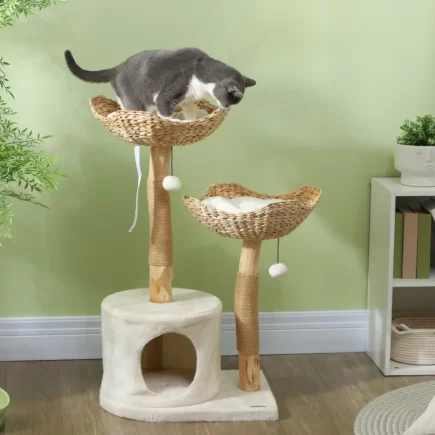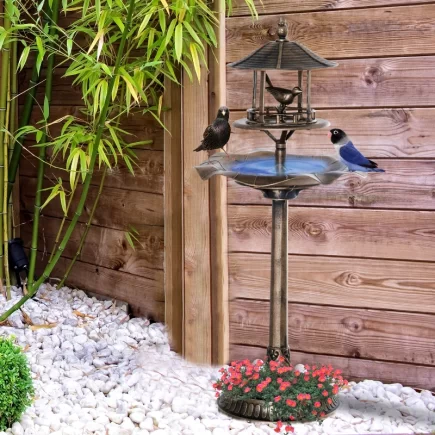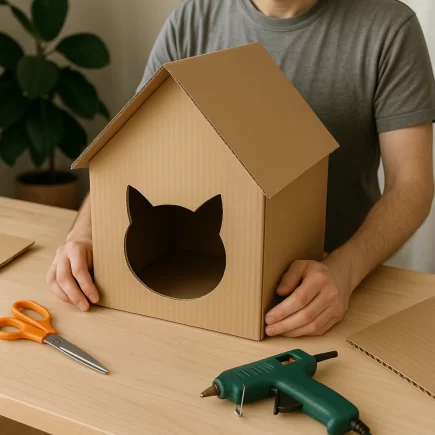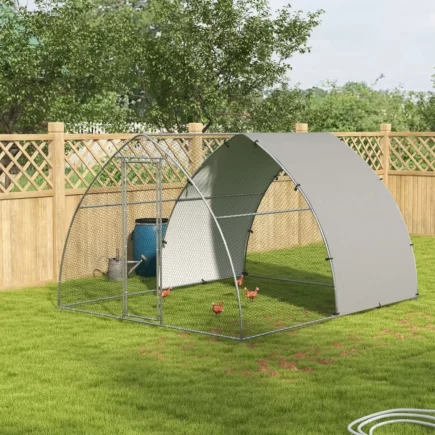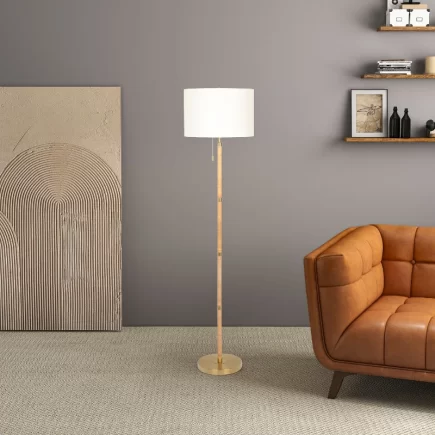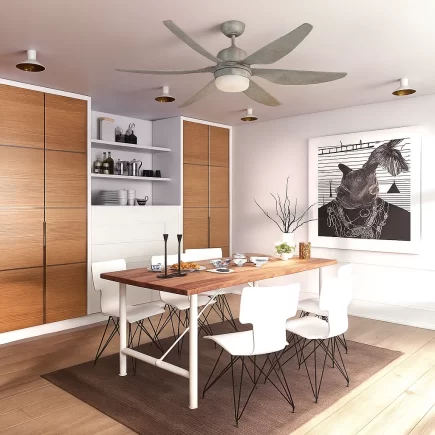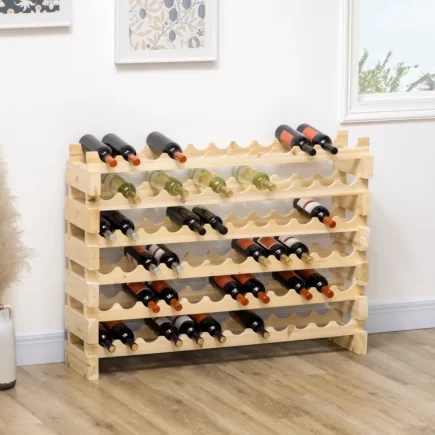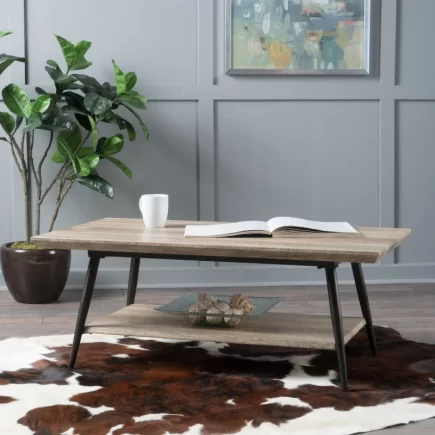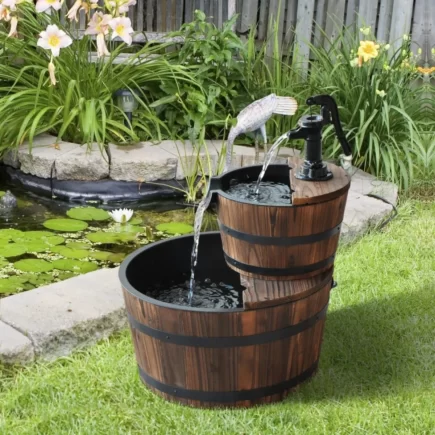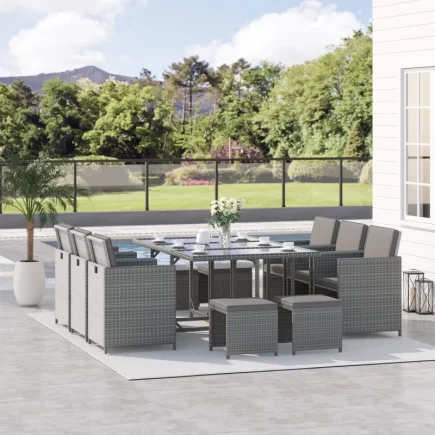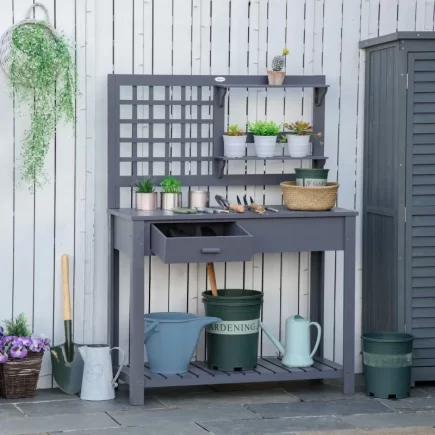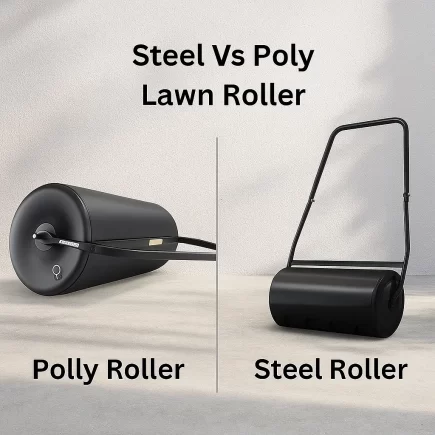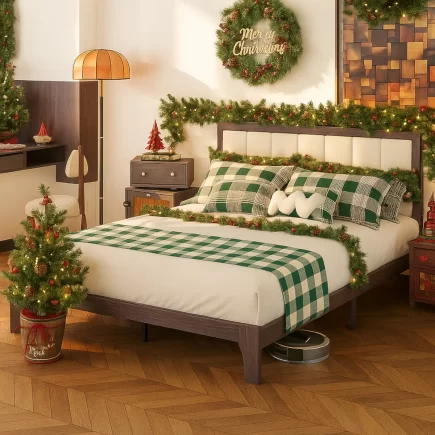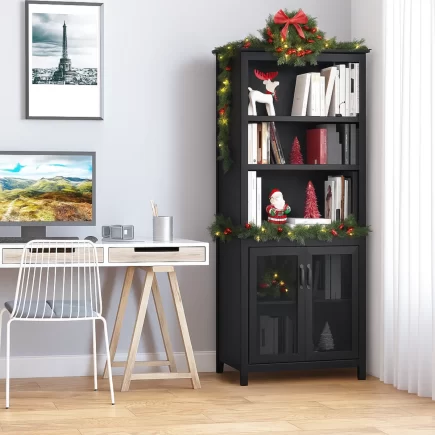Every summer, homeowners face the same question: should you rely on a ceiling fan or turn on the air conditioner? Both make hot days more bearable, but they work in completely different ways. The best option depends on your home’s climate, comfort needs, and energy budget.

This guide compares both cooling methods, performance, comfort, energy use, and health impact, so you can confidently decide what suits your space best. You’ll also learn how combining them can deliver optimal comfort with less energy use.
1. How Each System Works
Ceiling Fan:
Modern fans like the HOMCOM 52″ Reversible Ceiling Fan with Light or the Hengermei 26.8″ Crystal Chandelier Fan go a step further with reversible airflow.
- Forward rotation pushes air downward to enhance cooling during warmer months.
- Reverse rotation draws warm air from the ceiling downward in winter for more even heat.

Air Conditioner:
An air conditioner removes heat and humidity through a refrigeration cycle. Warm air passes over chilled coils, the refrigerant absorbs the heat, and the system releases it outdoors. The result is a noticeable temperature drop and drier indoor air.
Portable models such as the HOMCOM 12,000 BTU Portable Air Conditioner or the HOMCOM 10,000 BTU Mobile AC combine cooling, dehumidifying, and fan functions in one compact unit, ideal for apartments, bedrooms, and medium-size living spaces.

| Feature | Ceiling Fan | Air Conditioner |
| Cooling Method | Air circulation (wind-chill effect) | Refrigeration (removes heat) |
| Temperature Change | Feels cooler, no drop | 10–20 °F lower room temp |
| Humidity Control | None | Dehumidifies air |
| Power Use | 30–100 W | 500–3,500 W |
| Primary Effect | Cools people | Cools air and space |
Key takeaway: Fans cool people; ACs cool air.
2. Cooling Efficiency and Real Comfort
A ceiling fan works best in moderately warm, low-humidity environments (75–85 °F). The breeze it creates feels refreshing and natural. In contrast, an air conditioner performs better during high heat or humidity because it removes excess moisture while cooling the space.
The Perfect Balance:
Using a fan together with an air conditioner distributes cool air more evenly. You can raise your thermostat by 4 °F and still feel just as cool, cutting energy costs by roughly 20%.
3. Energy Consumption
| Appliance | Average Power | Typical Use (8 hr/day) |
| Ceiling Fan | 60 W | 8 hr |
| Portable AC | 900–1,300 W | 8 hr |
| Central AC | 3,500 W | 8 hr |
Running a fan costs just a few dollars per month, while air conditioners consume significantly more electricity. Combining both systems can reduce total energy use by up to 30%.
Quick Tips:
- Keep AC filters clean.
- Turn fans off when leaving a room, they cool people, not air.
4. Installation, Maintenance, and Upkeep
Ceiling fans are simple to install and require little care, just cleaning, tightening screws, and keeping blades balanced. Air conditioners, especially portable or central types, require more maintenance, including regular filter cleaning and coil inspection to ensure consistent airflow.

| Task | Ceiling Fan | Air Conditioner |
| Installation | Simple setup | Window/portable or professional install |
| Maintenance | Light cleaning | Clean filters and coils |
| Upkeep Frequency | Occasional | Seasonal or yearly |
| Lifespan | 10–15 yrs | 10–20 yrs |
Maintenance Tip: Clean fan blades monthly and wash or replace AC filters each season to maintain quiet, efficient performance.
5. Lifespan and Reliability
Ceiling fans usually last a decade or more with little upkeep, especially DC-motor models that run quietly and efficiently. Air conditioners generally last 8–10 years for portable units and up to 20 years for central systems when maintained properly.
| Appliance | Lifespan | Maintenance Need | Reliability |
| Ceiling Fan | 10–15 yrs | Low | High |
| Window/Portable AC | 8–10 yrs | Moderate | Moderate |
| Central AC | 15–20 yrs | High | High |
6. Best Cooling Choice by Room Size and Layout

| Room Type | Best Option | Reason |
| Bedroom (<150 sq ft) | Ceiling Fan | Quiet airflow, low noise |
| Medium Room (150–300 sq ft) | Fan or Portable AC | Depends on humidity |
| Large Room (300–550 sq ft) | AC + Fan Combo | Even air distribution |
| Basement | AC | Moisture control |
| Patio | Outdoor Fan | Safe air movement |

Tip: Keep fan blades about 8 ft above the floor for ideal circulation.
7. Air Quality and Health Considerations
Air conditioners filter dust, pollen, and allergens through washable filters, improving indoor air quality. Fans only move air and can stir dust if not cleaned regularly.

| Health Factor | Ceiling Fan | Air Conditioner |
| Filtration | None | Washable filters remove dust |
| Humidity Control | Maintains | Reduces |
| Skin Dryness | None | Possible |
| Allergy Relief | Low | High |
| Comfort for Asthma | Moderate | High |
Best Practice: Clean fan blades monthly, change AC filters regularly, and maintain indoor humidity between 40–50%.
8. Environmental Impact and Energy Efficiency
Ceiling fans use 30–50 times less energy than air conditioners, making them the greener option. DC-motor fans operate silently and efficiently, while modern portable ACs feature eco-friendly refrigerants and smart temperature control to reduce waste.
Eco Tip: Run a fan first before switching on the AC; seal windows and doors to conserve energy.
9. Noise Levels and Comfort Experience

| Appliance | Noise Level (dB) | Description |
| Ceiling Fan | 35–45 | Gentle hum / white noise |
| Portable AC | 50–56 | Low operating noise |
| Central AC | 40–55 | Steady background airflow |
Fans tend to be quieter and soothing, ideal for bedrooms or study spaces. Many portable ACs now include “sleep mode” settings for quieter nighttime operation.
10. Design and Aesthetic Appeal
Ceiling fans today combine décor with utility, sleek, modern options complement living rooms, while chandelier-style fans add elegance to bedrooms or dining spaces. Portable ACs now feature minimalist white or black finishes with touch panels and remote controls that blend easily into any room.

11. Seasonal Versatility and Dual Use
Ceiling fans with reversible motors can circulate cool air in summer and distribute warm air in winter. Many air conditioners include a fan-only or dehumidifier mode for use during mild spring or fall days. Running both together lets you maintain comfort while keeping the thermostat slightly higher or lower to save energy.
12. When to Use a Fan, an AC, or Both
| Situation | Best Option | Why |
| Mild (<85 °F) | Fan | Energy-efficient comfort |
| Hot and Humid (>90 °F) | AC | Removes heat and moisture |
| Nighttime | Fan | Improves sleep comfort |
| Heatwave | Fan + AC | Even air distribution |
| Allergy Season | AC | Filters air |
| Mixed Weather | Fan + Dehumidify Mode | Balanced comfort |
13. Tips to Maximize Comfort and Energy Savings
| Task | Frequency | Benefit |
| Clean fan blades | Monthly | Better airflow |
| Replace AC filter | 1–3 months | Higher efficiency |
| Check fan balance | Twice a year | Quieter operation |
| Service AC system | Annually | Prevents breakdowns |
| Reverse fan direction | Seasonal | Year-round comfort |
Extra Tips:
- Keep thermostats at 76–78 °F.
- Close curtains during peak sunlight.
- Use blackout drapes and light bedding for cooler sleep.
14. Choosing the Right Cooling Solution for Your Home
There’s no single “winner” between ceiling fans and air conditioners, they serve different purposes.
Choose a ceiling fan if you want:
- Affordable, energy-saving comfort.
- Gentle, natural airflow.
- Year-round operation with reversible settings.

Choose an air conditioner if you need:
- Consistent cooling in high heat.
- Humidity control and air filtration.
- Programmable temperature options.

Use both together for:
- Lower energy bills
- Better air circulation
- A balanced, comfortable indoor climate
In short, Ceiling Fans make you feel cooler, while Air Conditioners make the air cooler. Pairing the two creates the perfect blend of comfort, savings, and efficiency through every season.
FAQs
1. Do portable air conditioners need ventilation?
Yes, portable air conditioners must be vented outdoors to release the hot air they remove from a room. Most come with a simple window kit to make this process easy. Without proper ventilation, the unit will only recirculate warm air instead of cooling effectively.
2. What’s the best ceiling fan direction for summer and winter?
During summer, the fan should rotate counterclockwise to create a cooling breeze that pushes air downward. In winter, switch it to clockwise rotation to pull warm air from the ceiling into the room. Adjusting direction seasonally maximizes comfort and efficiency year-round.
3. Can ceiling fans replace air conditioners in very hot weather?
Ceiling fans can make hot rooms feel cooler by improving air circulation, but they don’t actually lower the temperature. In extreme heat or high humidity, an air conditioner is still necessary for real cooling relief. Fans work best as a supplement, not a full replacement.
4. Are ceiling fans good for allergy sufferers?
Ceiling fans can be suitable for people with allergies if maintained properly. Dust buildup on fan blades can circulate allergens throughout the room, so regular cleaning is essential. For better air quality, an air conditioner with a built-in filter is usually more effective.

